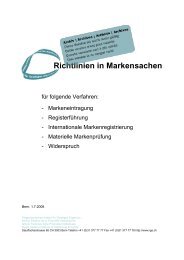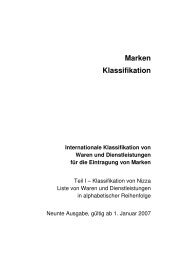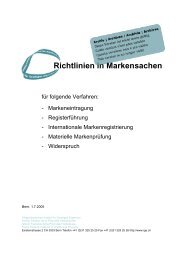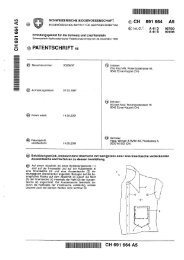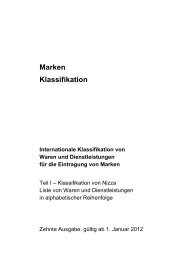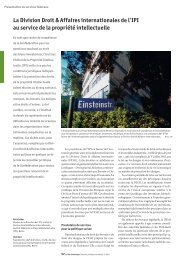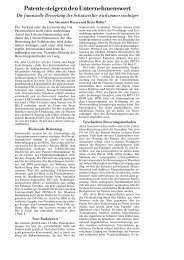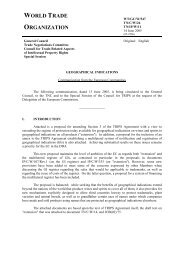AVIS DE DROIT PROTECTION DES SIGNES NATIONAUX
AVIS DE DROIT PROTECTION DES SIGNES NATIONAUX
AVIS DE DROIT PROTECTION DES SIGNES NATIONAUX
Create successful ePaper yourself
Turn your PDF publications into a flip-book with our unique Google optimized e-Paper software.
ETATS-UNIS<br />
Manufacturers and marketers must use the cost of goods sold or inventory costs of<br />
finished goods in their analysis. Such costs generally are limited to the total cost of all<br />
manufacturing materials, direct manufacturing labor, and manufacturing overhead.<br />
If given in good faith, manufacturers and marketers can rely on information from suppliers<br />
about the domestic content in the parts, components, and other elements they produce. Rather<br />
than assume that the input is 100 percent U.S.-made, however, manufacturers and marketers<br />
are advised to ask the supplier for specific information about the percentage of U.S. content<br />
before they make a U.S. origin claim.<br />
Example: A company manufactures food processors in its U.S. plant, making most of the<br />
parts, including the housing and blade, from U.S. materials. The motor, which constitutes 50<br />
percent of the food processor’s total manufacturing costs, is bought from a U.S. supplier. The<br />
food processor manufacturer knows that the motor is assembled in a U.S. factory. Even<br />
though most of the parts of the food processor are of U.S. origin, the final assembly is in the<br />
U.S., and the motor is assembled in the U.S., the food processor is not considered "all or<br />
virtually all" American-made if the motor itself is made of imported parts that constitute a<br />
significant percentage of the appliance’s total manufacturing cost. Before claiming the<br />
product is Made in USA, this manufacturer should look to its motor supplier for more specific<br />
information about the motor’s origin.<br />
Example: On its purchase order, a company states: "Our company requires that suppliers<br />
certify the percentage of U.S. content in products supplied to us. If you are unable or<br />
unwilling to make such certification, we will not purchase from you." Appearing under this<br />
statement is the sentence, "We certify that our ___ have at least ___% U.S. content," with<br />
space for the supplier to fill in the name of the product and its percentage of U.S. content. The<br />
company generally could rely on a certification like this to determine the appropriate countryof-origin<br />
designation for its product.<br />
To determine the percentage of U.S. content, manufacturers and marketers are advised to look<br />
back far enough in the manufacturing process to be reasonably sure that any significant<br />
foreign content has been included in their assessment of foreign costs. Foreign content<br />
incorporated early in the manufacturing process often will be less significant to consumers<br />
than content that is a direct part of the finished product or the parts or components produced<br />
by the immediate supplier.<br />
Example: The steel used to make a single component of a complex product (for example, the<br />
steel used in the case of a computer’s floppy drive) is an early input into the computer’s<br />
manufacture, and is likely to constitute a very small portion of the final product’s total cost.<br />
On the other hand, the steel in a product like a pipe or a wrench is a direct and significant<br />
input. Whether the steel in a pipe or wrench is imported would be a significant factor in<br />
evaluating whether the finished product is "all or virtually all" made in the U.S.<br />
Whether raw materials included in the evaluation of whether a product is "all or virtually all"<br />
made in the U.S depends on how much of the product’s cost the raw materials make up and<br />
how far removed from the finished product they are.<br />
Example: If the gold in a gold ring is imported, an unqualified Made in USA claim for the<br />
ring is deceptive. That’s because of the significant value the gold is likely to represent relative<br />
to the finished product, and because the gold — an integral component — is only one step<br />
220




